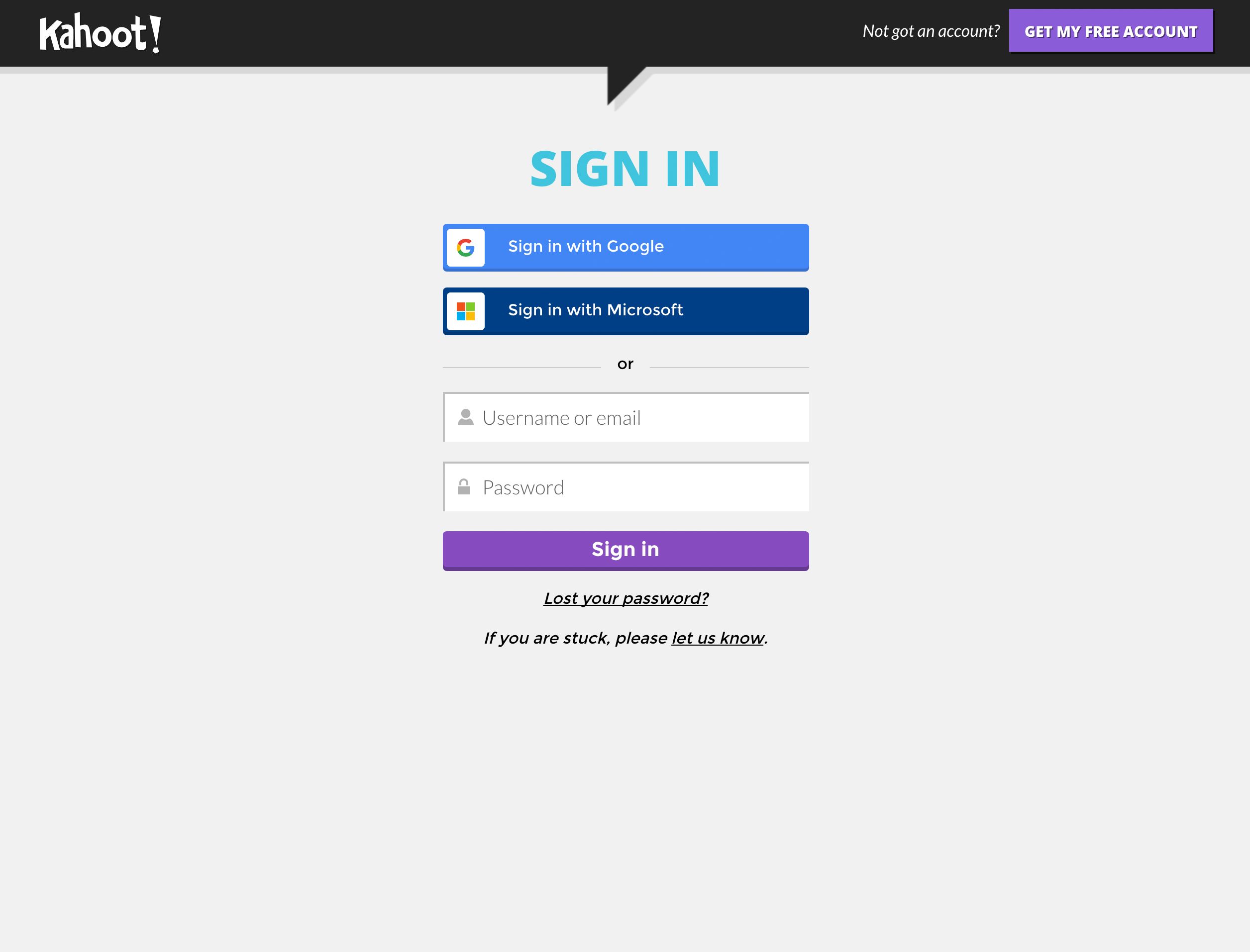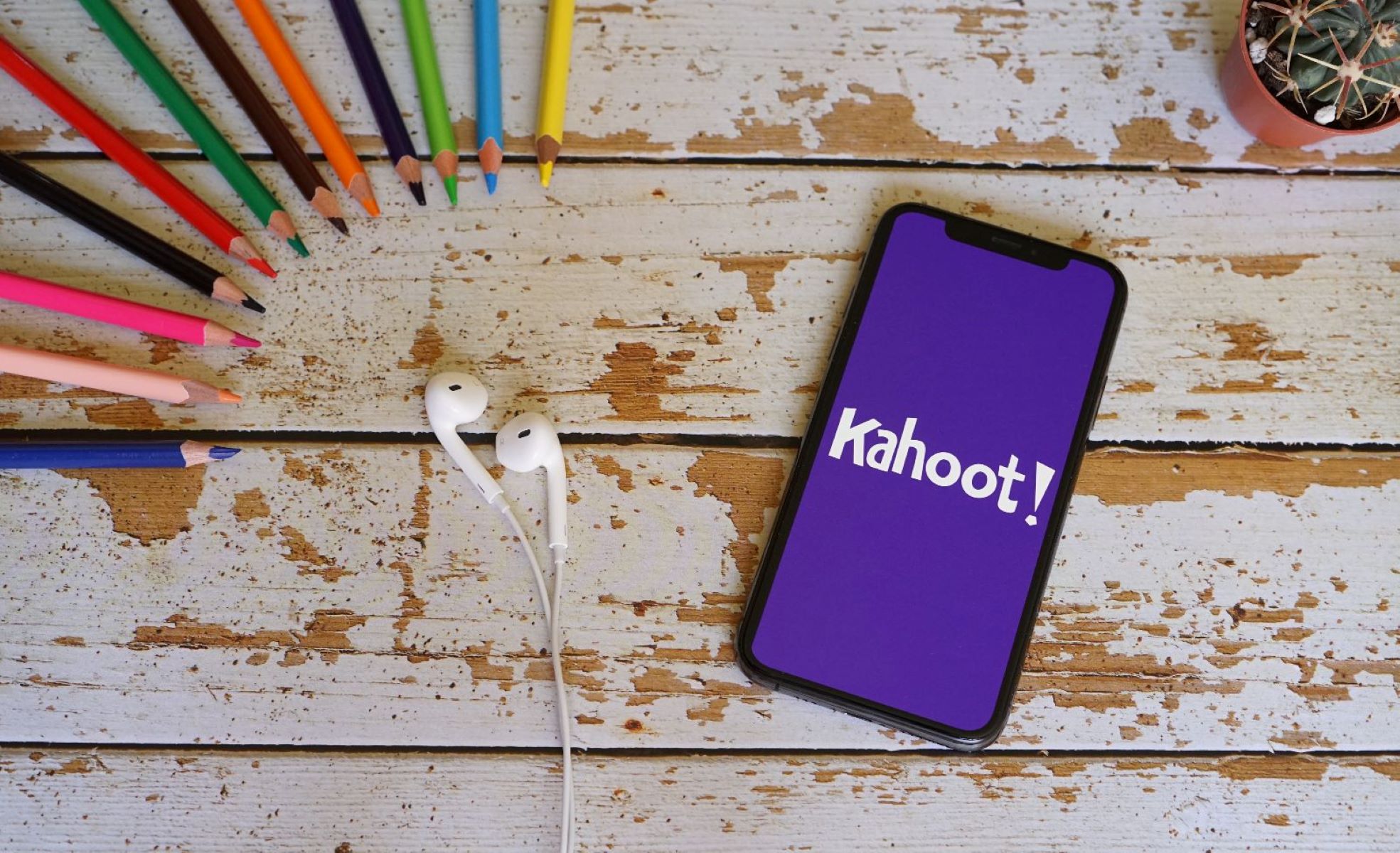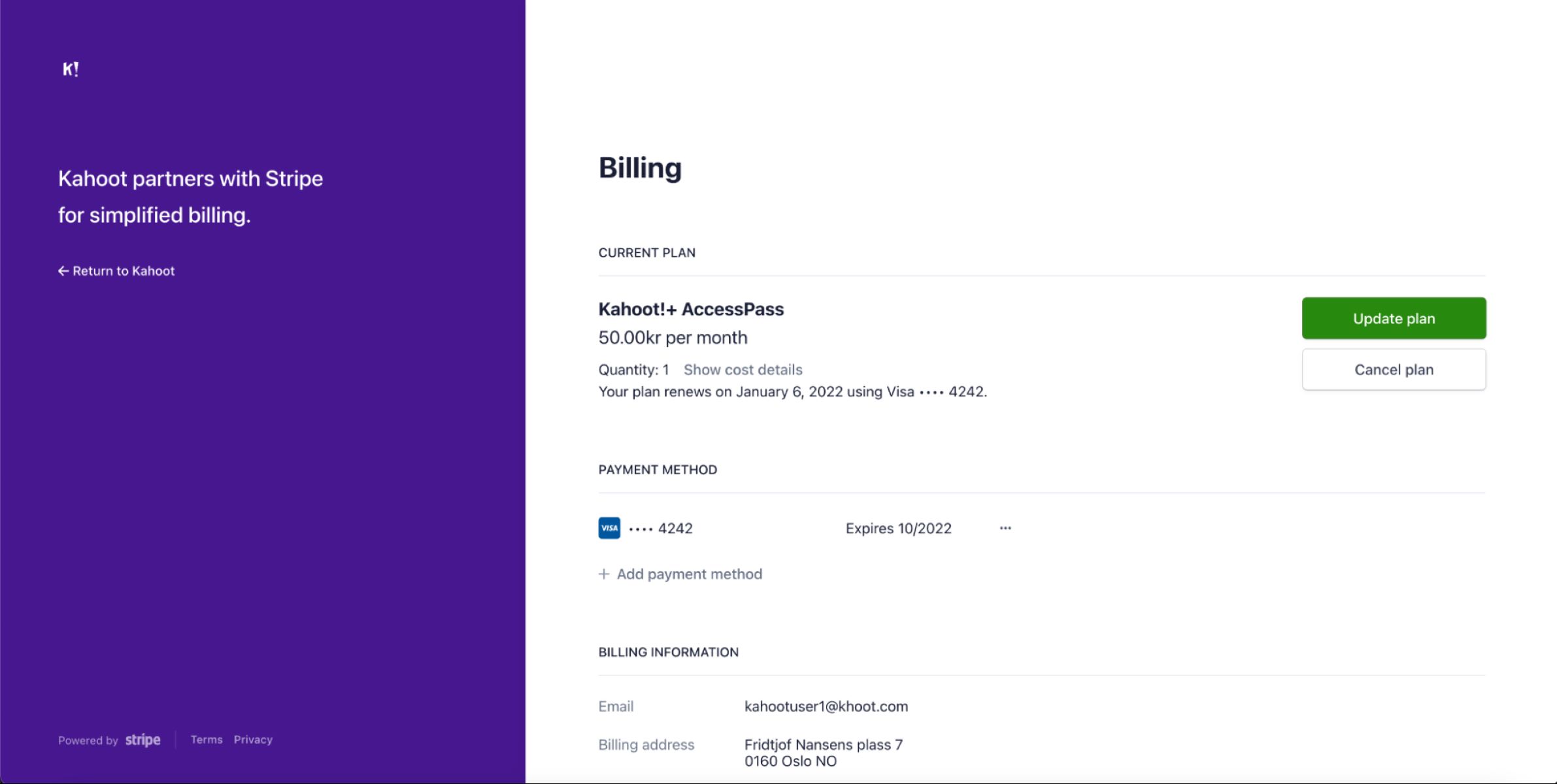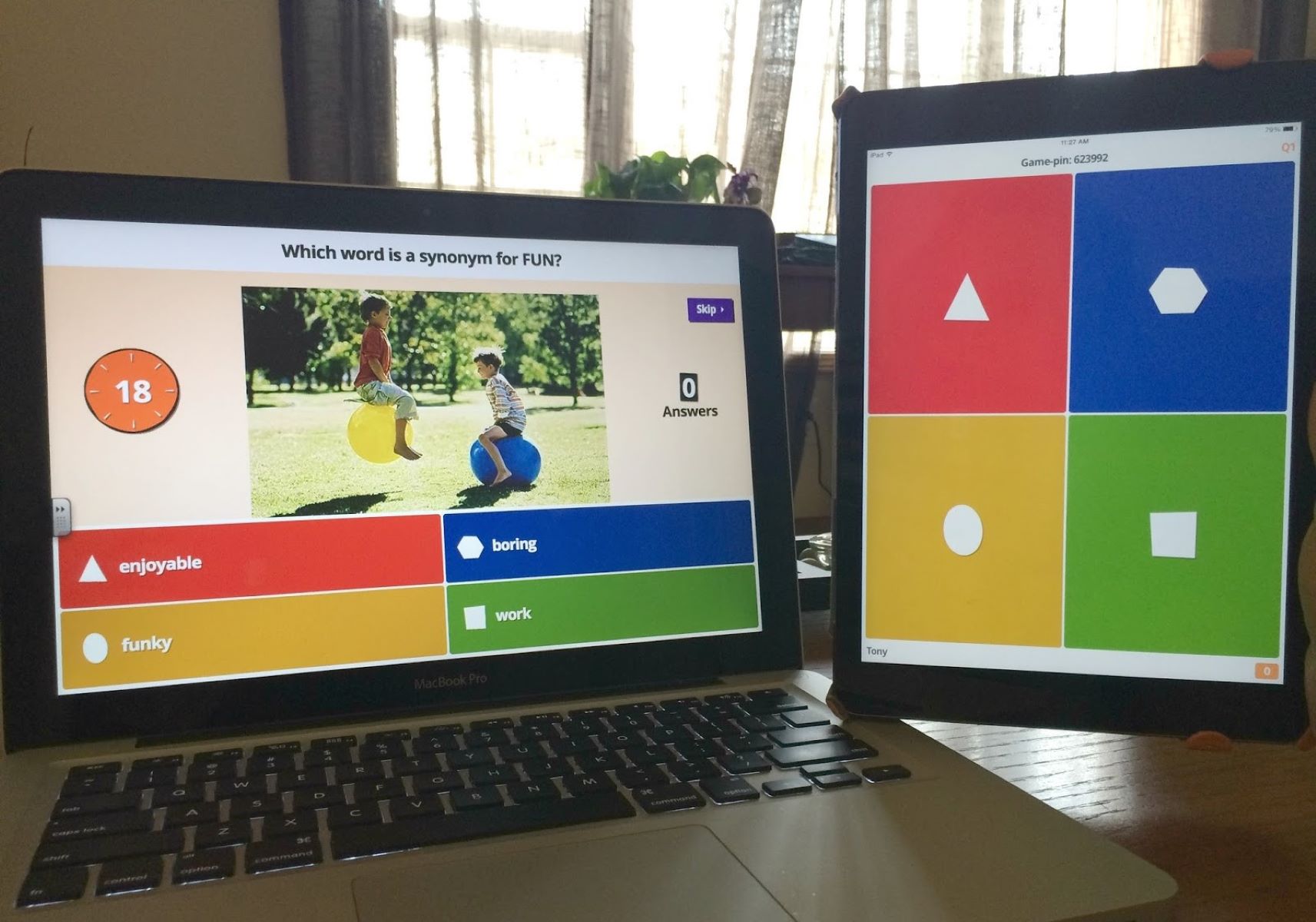Introduction
Are you tired of joining Kahoot games with random participants? Do you want to have more control over who can access and participate in your Kahoot quizzes? Well, the solution you’re looking for might just be a Kahoot password. In this article, we will explore what a Kahoot password is and how it can enhance your Kahoot experience.
Kahoot is a widely popular online platform that allows users to create and play interactive educational quizzes and games. It is often used by teachers to engage students in the classroom, but it is also enjoyed by individuals of all ages who want to test their knowledge in a fun and competitive way.
By default, when you create a Kahoot game, it is open for anyone to join using the unique game PIN. However, sometimes you may want to restrict access to your game and only allow certain individuals to participate. This is where a Kahoot password comes in handy.
A Kahoot password acts as an additional layer of security, ensuring that only those who know the password can join your game. This can be particularly useful in educational settings where teachers want to control who can participate to maintain a focused and inclusive learning environment.
With a Kahoot password, you have the power to decide exactly who can join your game. Whether you want to limit it to specific students, colleagues, or friends, a password provides you with the ability to create a more personalized and exclusive Kahoot experience.
Now that we understand the purpose and benefits of using a Kahoot password, let’s explore how it actually works and the different types of Kahoot passwords available.
What is Kahoot?
Kahoot is an interactive online learning platform that allows users to create, share, and play educational quizzes and games. With its user-friendly interface and engaging features, Kahoot has become a popular tool in classrooms, corporate training sessions, and social gatherings.
The platform is designed to make learning more interactive and enjoyable. It promotes active participation and encourages competition among participants, making it an effective tool for assessing and reinforcing knowledge in a fun and engaging way.
Teachers can use Kahoot to create quizzes, surveys, and discussions related to various subjects. The platform offers a vast library of ready-to-use educational content or allows users to create their own quizzes from scratch. This flexibility ensures that Kahoot caters to a wide range of educational needs and topics.
To play a Kahoot game, participants need to access the game using a unique PIN provided by the host. Once they enter the game, participants see questions and answer options on their devices, while the host displays the questions and results on a shared screen. Speed and accuracy are rewarded, adding to the excitement and competitiveness of the game.
Kahoot offers various features to enhance the user experience. Users can add images, videos, and diagrams to their quizzes to make them more visually appealing and interactive. Additionally, the platform supports gamification elements, such as points, rankings, and leaderboards, which further motivate participants to actively engage in the learning process.
One of the key advantages of Kahoot is its accessibility. The platform can be accessed from any device with an internet connection, including smartphones, tablets, and computers. This allows for seamless participation, as users can join Kahoot games from anywhere, whether they are in the classroom, at home, or on the go.
Kahoot is not only popular among teachers and students but also finds utility in corporate training sessions, team-building activities, and social events. Its versatility and adaptability make it a valuable tool for fostering engagement, collaboration, and learning in various contexts.
In the next section, we will explore why using a Kahoot password can further enhance the user experience and the benefits it offers.
Why use a Kahoot password?
While Kahoot games are typically open for anyone to join using the game PIN, there are several reasons why you might want to consider using a Kahoot password. Let’s explore the advantages of utilizing a password for your Kahoot games.
1. Control and exclusivity: By using a Kahoot password, you have full control over who can access and participate in your game. This is particularly beneficial for teachers and educators who want to limit participation to their students or specific individuals, ensuring a focused learning environment.
2. Personalized experience: A Kahoot password allows you to create a more personalized and tailored experience for your participants. You can restrict access to a specific group of people, such as a certain class or team, fostering a sense of belonging and camaraderie.
3. Privacy and security: Using a password adds an additional layer of privacy and security to your Kahoot game. It prevents uninvited participants from joining and ensures that only those who have been provided with the password can participate, safeguarding sensitive information and preventing unwanted disruptions.
4. Enhanced engagement: Implementing a password can increase the level of engagement and motivation among participants. By making the game exclusive and limited in access, participants may feel a greater sense of importance and responsibility, leading to increased focus and participation.
5. Efficient organization: For educators and trainers who are conducting multiple Kahoot games, having a password for each game allows for better organization and management. It ensures that participants are directed to the correct game and minimizes the chances of confusion or accidental participation.
It’s important to note that while there are many benefits of using a Kahoot password, it is essential to strike a balance. Over-securing the game with complex passwords may discourage participation and defeat the purpose of creating an inclusive and interactive learning environment.
In the following section, we will delve into how a Kahoot password works and the different types of passwords that can be used.
How does a Kahoot password work?
A Kahoot password adds an extra layer of security to your game, ensuring that only those who have the password can join and participate. Let’s explore how the password system works in Kahoot.
When you create a Kahoot game, you have the option to enable a password for that specific game. Once the password is set, participants will be prompted to enter it before they can join the game. This requirement helps to restrict access to the game and maintain a controlled environment.
To join a Kahoot game with a password, participants need to enter the game PIN, just like they would for a non-password protected game. After entering the game PIN, they will be prompted to enter the password associated with that particular game. Only when the correct password is entered will they be able to proceed and join the game.
Kahoot passwords are case-sensitive, meaning that uppercase and lowercase letters must be entered correctly. This ensures that the password is accurately entered to prevent unauthorized access.
Once a game is password protected, the game PIN remains the same for all participants, but only those who know the password can successfully join the game. This allows for a seamless experience for participants who have been given access while maintaining the privacy and exclusivity of the game.
It’s important to note that Kahoot passwords are set on a game-by-game basis. Each game you create can have its own unique password. This flexibility gives you the ability to customize the access and control for each game, depending on your specific requirements.
Additionally, as the game host, you have the option to change or remove the password at any time during the game or before it starts. This allows for added flexibility and adaptability, giving you the control to adjust the password settings as needed.
By utilizing a Kahoot password, you can ensure that your game remains exclusive, secure, and tailored to the individuals you want to participate. In the next section, we will explore different types of Kahoot passwords that you can use for your games.
Different types of Kahoot passwords
When it comes to using a Kahoot password, there are different types of passwords you can utilize to enhance your game experience. Let’s take a look at some of these types:
1. Shared Password: This is the most common type of Kahoot password. It is a single password that is shared with all the participants who are allowed to join the game. This type of password ensures that only those who have been provided with the password can enter the game, maintaining the exclusivity and privacy of the game.
2. Unique Passwords: In some cases, you may want to provide individual participants with unique passwords. This can be useful if you want to track and monitor individual progress or if you are conducting a competition where each participant needs their own personalized access. Unique passwords can also be used to prevent unauthorized sharing of the password among participants.
3. Temporary Passwords: If you want to restrict access to a Kahoot game for a specific period of time, you can use a temporary password. This type of password is valid for a limited duration, after which it expires and participants cannot join the game using that password. Temporary passwords are useful for time-bound events, quizzes, or assessments.
4. Rotating Passwords: Rotating passwords involve changing the password periodically. This can be done at predetermined intervals or after each session of the game. Rotating passwords are useful when you want to ensure that only the active participants with the latest password can join the game. It adds an extra layer of security and prevents unauthorized access from participants who may have previously obtained the password.
5. Team-specific Passwords: If you are conducting a Kahoot game with teams or groups, you can assign team-specific passwords. Each team will have its own unique password, allowing only members of that team to join the game. This type of password arrangement promotes teamwork, collaboration, and healthy competition among different groups.
It’s important to choose the right type of password based on your specific requirements and the nature of your Kahoot game. Consider factors such as the number of participants, the duration of the game, the need for individual tracking, and the level of privacy and exclusivity you want to maintain.
In the next section, we will explore the benefits and limitations of using a Kahoot password for your games.
Benefits and limitations of using a Kahoot password
Using a Kahoot password offers several benefits that can enhance your game experience. However, it’s important to consider the limitations as well. Let’s explore the advantages and potential drawbacks of using a Kahoot password.
Benefits:
1. Enhanced Security: The primary advantage of using a Kahoot password is the increased level of security it provides. It allows you to control who can join your game, ensuring that only authorized participants have access. This can be particularly valuable in educational settings or corporate environments where privacy and confidentiality are important.
2. Exclusivity: A Kahoot password allows you to create a more personalized and exclusive gaming experience. By restricting access to a select group of individuals, such as students or team members, you can foster a sense of community and encourage active participation among the intended audience.
3. Customization: With a Kahoot password, you have the ability to customize the access and control of your game. You can choose different types of passwords, set expiration dates, or assign unique passwords to individuals or groups. This flexibility allows you to tailor the game to your specific requirements and objectives.
4. Better Organization: Implementing a password system helps in organizing multiple Kahoot games. Each game can have its own unique password, making it easier to manage and direct participants to the correct game. This reduces confusion and ensures a seamless gaming experience.
Limitations:
1. Reduced Accessibility: While a password provides security and control, it can also limit access to your game. Participants who do not have the password will be unable to join, potentially excluding some individuals who could benefit from the learning or entertainment experience offered by Kahoot.
2. Complexity: Depending on the type of password you choose, there may be added complexity for participants. Remembering or inputting a password can be time-consuming and may discourage some users from joining the game. It’s essential to strike a balance and keep the password process user-friendly and straightforward.
3. Risk of Password Sharing: Despite the password system, there is still a risk of participants sharing the password with others who are not authorized to join the game. It’s important to communicate the rules and expectations clearly and encourage participants to respect the exclusivity of the game.
4. Maintenance and Updates: If you decide to change or update the password for a game, you need to ensure that all participants are informed of the new password. This requires effective communication and can be challenging, especially if there are a large number of participants or frequent password changes.
Considering both the benefits and limitations will help you determine whether using a Kahoot password is appropriate for your specific needs and objectives. Keeping the password process user-friendly and balancing accessibility with security is key to creating an enjoyable and inclusive gaming experience.
In the next section, we will explore how you can generate a Kahoot password for your games.
How to generate a Kahoot password
Generating a Kahoot password is a simple process that can be done directly within the Kahoot platform. Let’s explore the steps to generate a password for your Kahoot game.
1. Create a new Kahoot game: Start by creating a new Kahoot game or accessing an existing game that you want to add a password to. You can do this by logging into your Kahoot account and navigating to the “Create” or “Edit” section.
2. Enable the password feature: Once you are in the game editor, look for the option to enable a password for the game. This option is typically located in the settings or privacy section of the game editor. Toggle the password feature on to activate it for your game.
3. Set the password: After enabling the password feature, you will be prompted to set a password for your game. Choose a password that is easy for authorized participants to remember but secure enough to prevent unauthorized access. You can use a combination of letters, numbers, and symbols to create a strong password.
4. Communicate the password: Once you have set the password, you need to communicate it to the participants who are allowed to join the game. This can be done through various means, such as email, messaging apps, or in-person communication. Make sure to share the password securely and only with the intended participants.
5. Test the password: Before officially launching your game, it’s a good idea to test the password yourself. Enter the game PIN and the password as a participant to ensure that it is working correctly and allowing access to the game.
6. Change or remove the password (optional): If at any point you want to change or remove the password for your game, you can easily do so within the Kahoot game editor. Simply go to the settings or privacy section and make the necessary changes. Remember to communicate any password updates to the participants if applicable.
By following these steps, you can generate and implement a Kahoot password for your game. Remember to choose a password that strikes the right balance between security and ease of use, and to communicate it securely to authorized participants.
In the next section, we will provide some tips for effectively using a Kahoot password in your games.
Tips for using a Kahoot password effectively
When using a Kahoot password, there are several tips you can follow to ensure its effective implementation and maximize the benefits it brings to your game. Let’s explore some key tips for using a Kahoot password effectively:
1. Communicate clearly: Clearly communicate the existence of a password-protected game to your participants. Provide them with the necessary information, including the game PIN and the password, in a timely and secure manner. This ensures that participants understand the requirements for joining the game.
2. Set clear expectations: Clearly communicate the purpose and expectations of the game to participants. This includes specifying who is allowed to join the game, the time frame for participation, and any specific rules or guidelines they need to follow. Setting clear expectations helps ensure a smooth and focused gaming experience.
3. Strike a balance: When choosing a password, strike a balance between security and ease of use. Avoid using overly complex passwords that may be difficult for participants to remember or enter correctly. At the same time, ensure that the password is strong enough to prevent unauthorized access.
4. Limit password sharing: Encourage participants not to share the password with unauthorized individuals. Emphasize the exclusivity of the game and the importance of maintaining privacy and security. Reinforce the idea that the password is intended only for those invited to participate.
5. Monitor participation: Keep an eye on the participants joining your game and ensure that they are the intended individuals. Monitor their progress, engagement, and behavior to maintain the integrity and effectiveness of the game. Address any issues or violations promptly to ensure a fair and productive gaming experience.
6. Evaluate the need for a password: Consider the nature of your game and the participants involved when deciding whether to use a password. Evaluate if the benefits of a password, such as enhanced security and exclusivity, outweigh the potential drawbacks, such as reduced accessibility or complexity. Only implement a password when it aligns with your specific goals and requirements.
7. Seek participant feedback: Gather feedback from your participants regarding the use of a password. Understand their experiences, challenges, and suggestions for improvement. This feedback can help you refine your approach and make future games more engaging and enjoyable for everyone involved.
Following these tips will help you effectively use a Kahoot password and create a secure and engaging gaming experience. By communicating clearly, setting expectations, and balancing security with accessibility, you can make the most of this feature and enhance your overall Kahoot experience.
In the next section, we will wrap up our discussion on Kahoot passwords and summarize the key points covered in this article.
Conclusion
In conclusion, utilizing a Kahoot password can greatly enhance your Kahoot game experience. It provides you with control, privacy, and exclusivity, allowing you to create a more personalized and tailored learning or entertainment environment. By restricting access to only authorized participants, you can foster a focused and engaging atmosphere.
Kahoot passwords offer several benefits, including enhanced security, customization options, and better organization of multiple games. They give you the ability to control who can join your game and ensure that sensitive information remains private. However, it’s important to find a balance between security and accessibility to ensure a seamless experience for participants.
When generating a Kahoot password, it is crucial to communicate it clearly and securely to the intended participants. This helps to avoid unauthorized access and maintain the integrity of the game. Setting clear expectations and monitoring participation can further enhance the effectiveness of using a password.
Remember to evaluate the need for a password based on the nature of your game and the participants involved. Not all games require a password, and it is important to weigh the benefits against potential limitations, such as reduced accessibility or complexity for participants.
In summary, a Kahoot password adds an extra layer of security and exclusivity to your game. It allows you to tailor the game to your specific requirements, ensuring a more focused and personalized experience. By following the tips provided in this article, you can effectively use a Kahoot password to create an engaging and secure learning or entertainment environment for your participants.

























